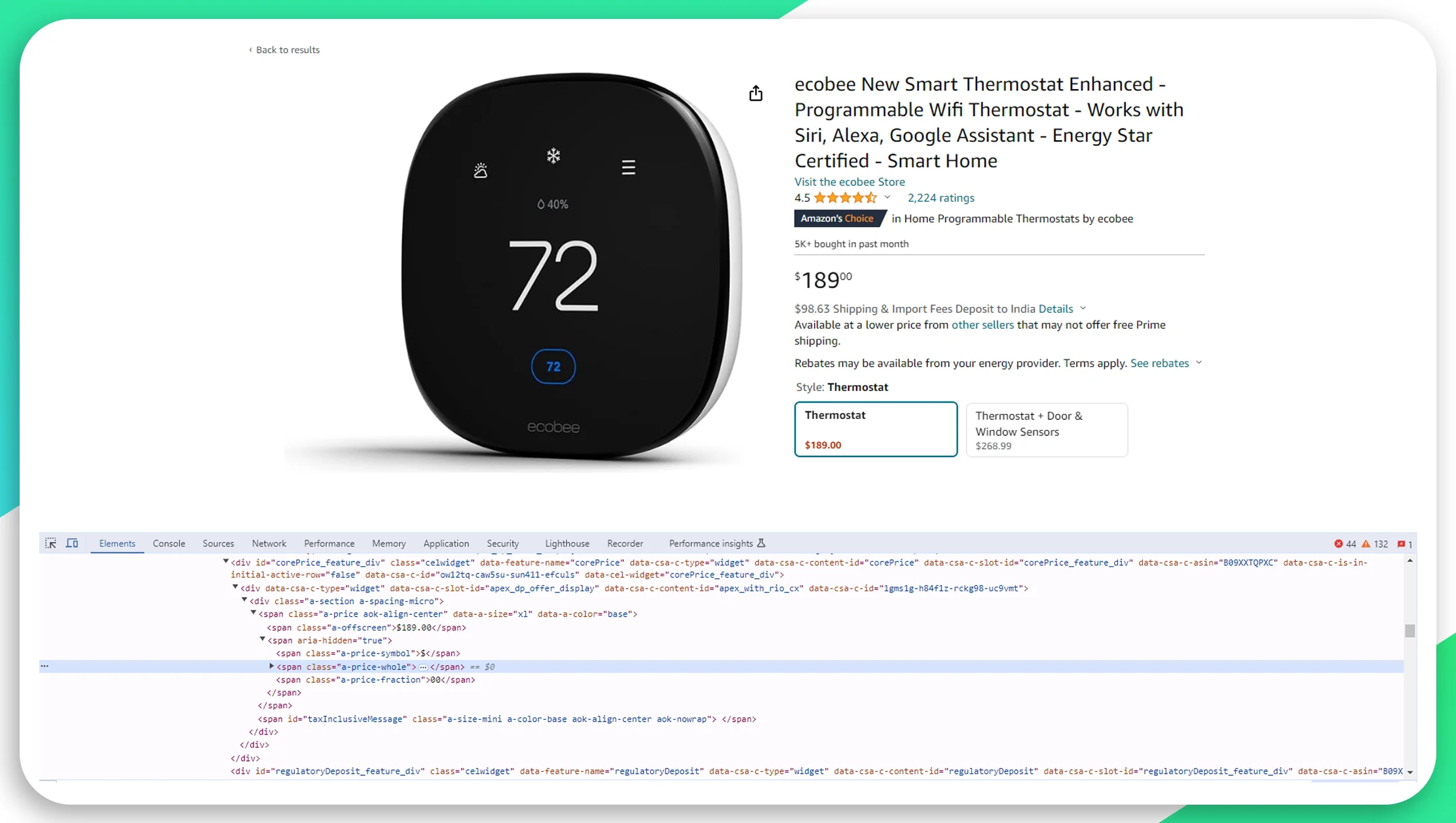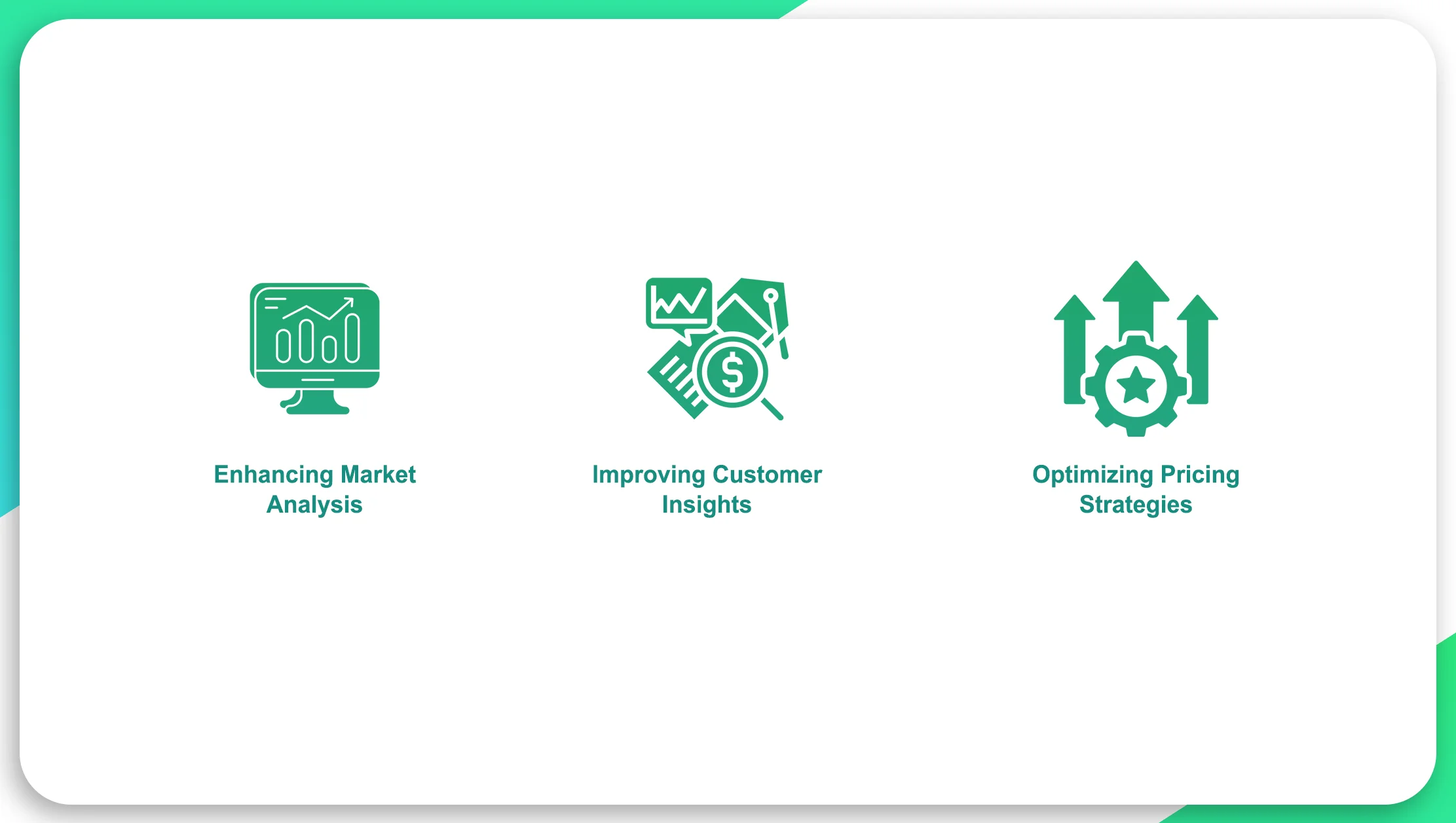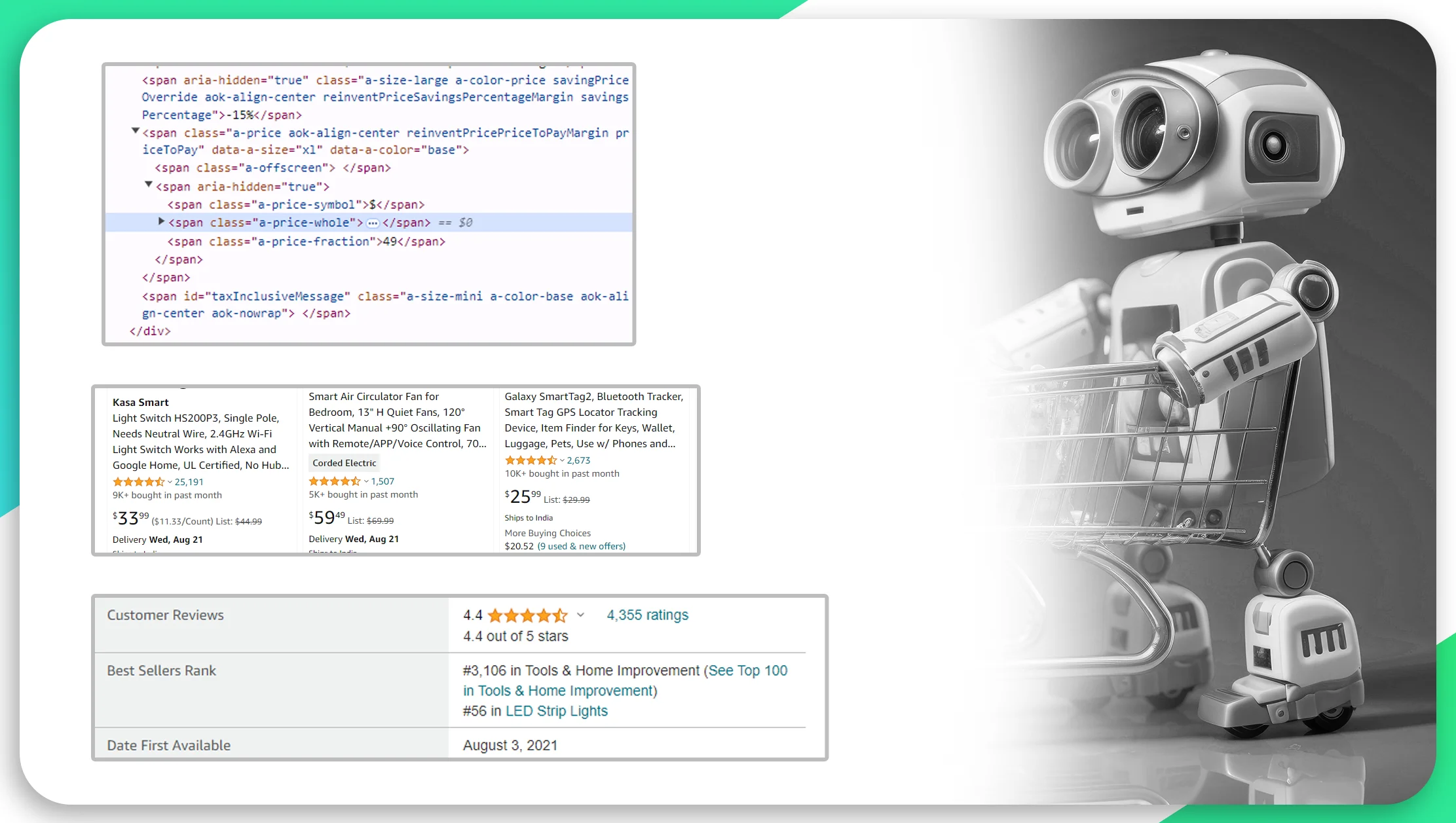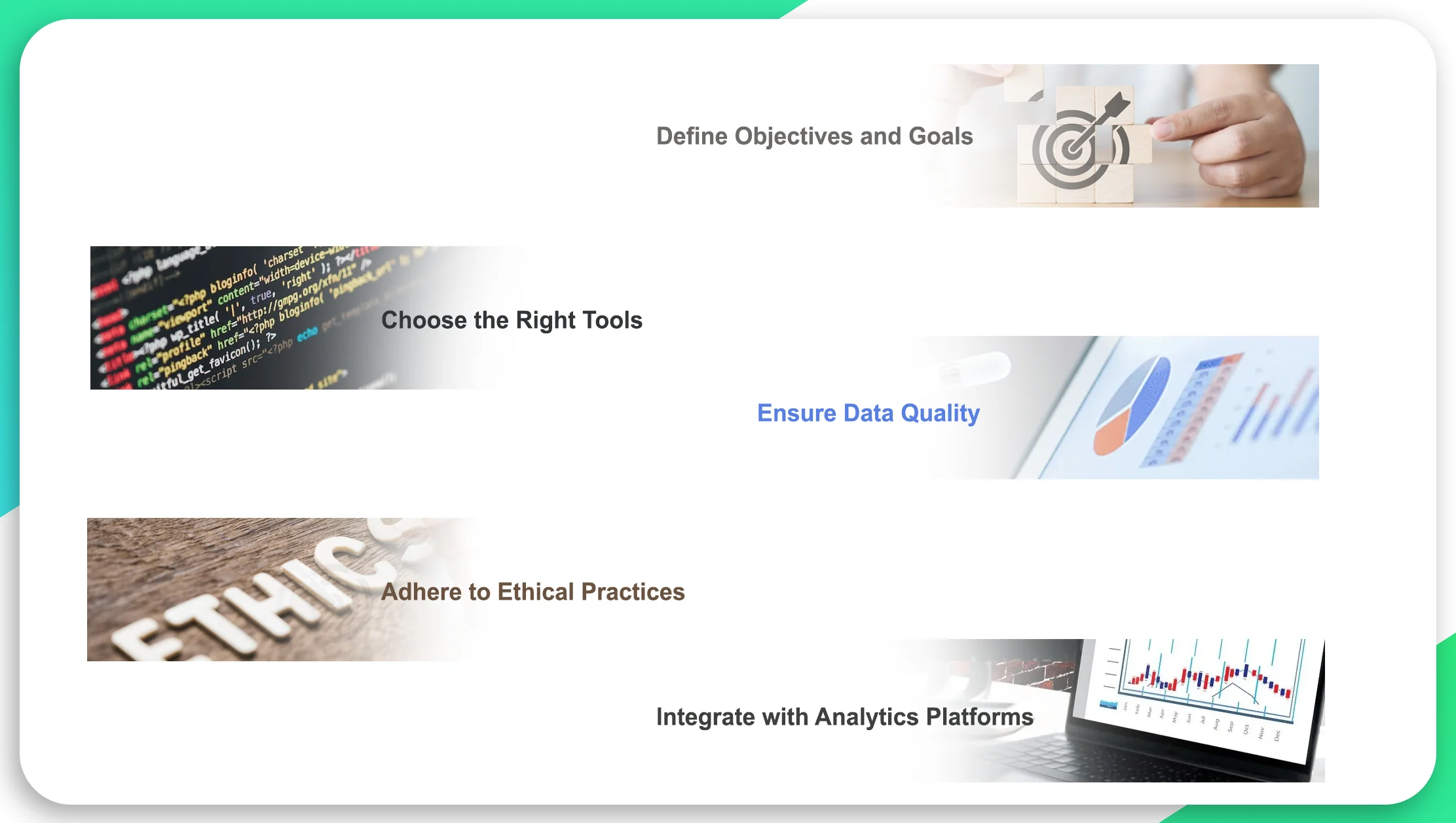

Introduction
E-commerce has revolutionized the way businesses operate, providing endless opportunities to understand market trends, customer behaviors, and competitive landscapes. At the heart of this transformation lies data. E-commerce data extraction, the process of collecting and analyzing data from online retail platforms, has become an essential tool for businesses seeking to thrive in a highly competitive market. This blog explores the latest trends in e-commerce data collection, highlighting how businesses can leverage these advancements to enhance their strategies and operations.
Introduction to E-commerce Data Extraction

E-commerce Data Extraction involves the collection of data from various online sources, such as websites, social media platforms, and digital marketplaces. This data can include product prices, customer reviews, inventory levels, sales trends, and more. By scraping e-commerce data, businesses can gain valuable insights into their market, optimize their pricing strategies, and improve customer experiences.
Importance of E-commerce Data Extraction

Enhancing Market Analysis
Extracting e-commerce data allows businesses to perform comprehensive market analysis. By understanding market trends, businesses can identify emerging opportunities, predict future demands, and stay ahead of competitors. Market analysis powered by e-commerce data collection helps businesses make informed decisions and adapt to changing market conditions swiftly.
Improving Customer Insights
Customer data is a goldmine for businesses. E-commerce data scraping provides detailed insights into customer preferences, buying behaviors, and feedback. By analyzing this data, businesses can tailor their products and services to meet customer needs, enhance customer satisfaction, and foster loyalty. Understanding customer sentiment through review data also helps in refining marketing strategies.
Optimizing Pricing Strategies
Pricing is a critical factor in e-commerce.E-commerce data scraping enables businesses to monitor competitor pricing, track price fluctuations, and analyze pricing trends. This information is vital for developing dynamic pricing strategies that maximize profits while remaining competitive. Businesses can adjust their prices in real-time based on market demand and competitor actions.
Latest Trends in E-commerce Data Extraction

1. AI and Machine Learning Integration
One of the most significant trends when you extract e-commerce data is the integration of Artificial Intelligence (AI) and Machine Learning (ML). AI and ML algorithms can analyze vast amounts of data quickly and accurately. They can identify patterns, detect anomalies, and make predictions that were previously impossible. By leveraging AI and ML, businesses can automate data extraction processes, reduce errors, and gain deeper insights into their data.
2. Real-time Data Extraction
In the fast-paced world of e-commerce, real-time data is invaluable.Real-time e-commerce web extraction allows businesses to monitor market trends, track competitor activities, and respond to changes instantly. This capability is particularly crucial for dynamic pricing, inventory management, and marketing campaigns. Real-time data extraction ensures that businesses are always operating with the most up-to-date information.
3. Advanced Web Scraping Tools
Web scraping tools have evolved significantly, offering more advanced features and capabilities. Modern web scraping tools can handle complex websites, extract data from multiple sources simultaneously, and provide data in structured formats. These tools often come with built-in functionalities such as data cleaning, transformation, and integration with other data analysis tools. Businesses can now scrape e-commerce data more efficiently and accurately than ever before.
4. Ethical and Legal Considerations
To scrape e-commerce data becomes more prevalent, ethical and legal considerations have gained prominence. Businesses must ensure that their data extraction practices comply with data privacy regulations and respect intellectual property rights. Ethical web scraping involves obtaining data transparently and responsibly, without causing harm to the targeted websites. Adhering to ethical and legal standards not only protects businesses from legal repercussions but also builds trust with customers and stakeholders.
5. Use of APIs for Data Extraction
Application Programming Interfaces (APIs) have become a popular method to extract e-commerce data. APIs provide a more structured and reliable way to access data from e-commerce platforms. Many online retailers and marketplaces offer APIs that allow businesses to retrieve product information, pricing data, and customer reviews. Using APIs simplifies the data extraction process, reduces the risk of being blocked, and ensures data accuracy.
6. Focus on Data Quality and Accuracy
High-quality data is crucial for making informed business decisions. There is an increasing focus on ensuring the accuracy, completeness, and reliability of extracted data. Businesses are investing in advanced data validation and cleaning techniques to eliminate errors and inconsistencies. Accurate data extraction leads to better insights, improved decision-making, and more effective strategies.
7. Integration with Big Data and Analytics Platforms
The integration of e-commerce web extraction with big data and analytics platforms is another emerging trend. Extracted data is often vast and complex, requiring advanced analytics tools to derive meaningful insights. Big data platforms can handle large datasets, perform sophisticated analyses, and generate actionable insights. By integrating e-commerce data with these platforms, businesses can unlock the full potential of their data.
8. Personalization and Customer Segmentation
Personalization is key to enhancing customer experiences. E-commerce extraction enables businesses to gather detailed information about individual customers, such as their preferences, purchase history, and browsing behavior. This data can be used to create personalized marketing campaigns, recommend products, and improve customer interactions. Customer segmentation, powered by data extraction, allows businesses to target specific customer groups with tailored offers and promotions.
9. Predictive Analytics
Predictive analytics is gaining traction in e-commerce. By analyzing historical data, businesses can make predictions about future trends, customer behaviors, and market conditions. E-commerce extraction provides the necessary data for predictive analytics models. Businesses can use these models to forecast demand, optimize inventory levels, and plan marketing strategies. Predictive analytics helps businesses stay ahead of the competition and make proactive decisions.
10. Enhanced Competitor Analysis
Understanding competitors is crucial for staying competitive. E-commerce scraping enables businesses to perform detailed competitor analysis. By monitoring competitor prices, product offerings, and marketing strategies, businesses can identify strengths and weaknesses, uncover market opportunities, and develop effective counter-strategies. Enhanced competitor analysis through data extraction provides businesses with a competitive edge.
11. Multi-channel Data Extraction
E-commerce is no longer limited to a single platform. Customers interact with brands through various channels, including websites, social media, mobile apps, and marketplaces. Multi-channel data extraction involves collecting data from all these sources to gain a comprehensive view of the customer journey. Businesses can analyze cross-channel interactions, understand customer preferences, and deliver consistent experiences across all touchpoints.
12. Focus on User Experience
User experience is a critical factor in e-commerce success. Data extraction can provide insights into how customers interact with websites, what challenges they face, and what improvements are needed. By analyzing user behavior data, businesses can optimize website design, enhance navigation, and streamline the checkout process. A better user experience leads to higher customer satisfaction and increased sales.
How to Implement E-commerce Data Extraction

1. Define Objectives and Goals
Before starting the data extraction process, businesses must define their objectives and goals. Understanding what data is needed and why helps in selecting the right tools and techniques. Clear objectives ensure that the data extraction efforts are aligned with the business’s strategic priorities.
2. Choose the Right Tools
Selecting the appropriate tools is crucial for successful e-commerce data extraction. Businesses can choose from a variety of web scraping tools, APIs, and data extraction platforms. The choice of tools depends on factors such as the complexity of the websites, the volume of data, and the desired level of automation. Investing in advanced tools ensures efficient and accurate data extraction.
3. Ensure Data Quality
Maintaining data quality is essential for deriving meaningful insights. Businesses should implement data validation and cleaning processes to remove errors and inconsistencies. Regular monitoring and updating of data extraction processes help in maintaining data accuracy. High-quality data leads to better decision-making and improved business outcomes.
4. Adhere to Ethical Practices
Ethical data extraction practices are vital for maintaining trust and compliance. Businesses should ensure that their data extraction methods do not violate any laws or ethical standards. Obtaining data transparently and respecting the terms of service of the targeted websites is essential. Ethical practices protect businesses from legal issues and build a positive reputation.
5. Integrate with Analytics Platforms
Integrating extracted data with analytics platforms enhances its value. Advanced analytics tools can process and analyze large datasets, uncovering hidden patterns and trends. Businesses should leverage these platforms to gain deeper insights into their data and make data-driven decisions. Integration with analytics platforms enables businesses to unlock the full potential of e-commerce web collection.
Conclusion
E-commerce data extraction is evolving rapidly, driven by advancements in technology and changing market dynamics. By staying abreast of the latest trends, businesses can harness the power of data to enhance their strategies and operations. The integration of AI and ML, real-time data extraction, advanced web scraping tools, and ethical practices are shaping the future of e-commerce scraping. Businesses that leverage these trends can gain a competitive edge, improve customer experiences, and drive growth in the dynamic world of e-commerce. As the e-commerce landscape continues to evolve, data extraction will remain a critical tool for businesses seeking to thrive in the digital era.
Unlock the full potential of your e-commerce data with Real Data API. Explore our solutions and get started today!















